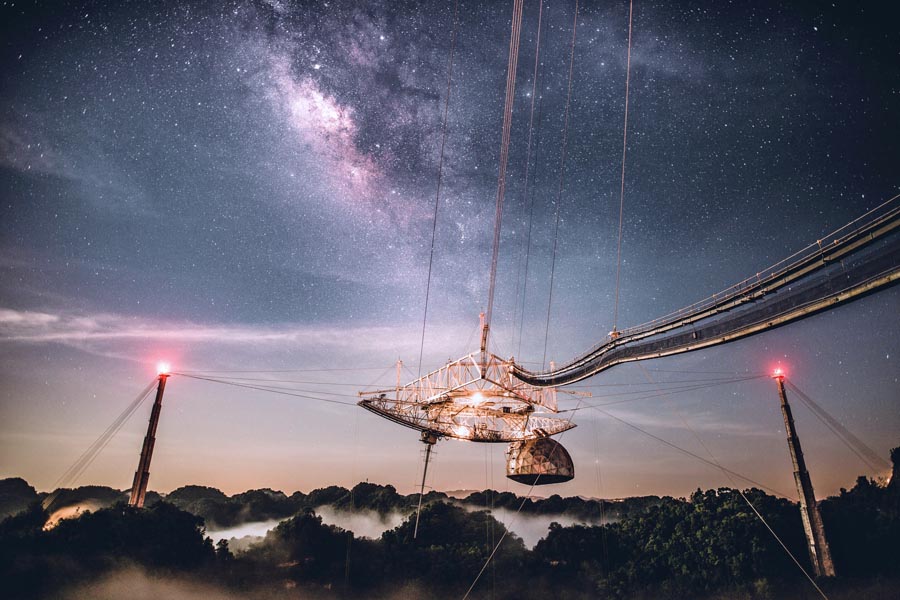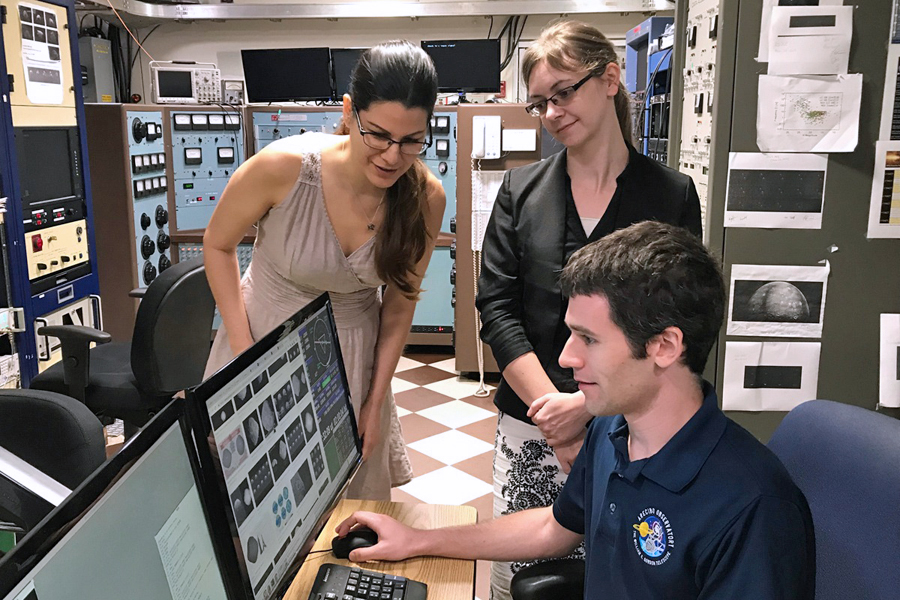Practical Techie: Earthquakes did Arecibo Observatory in

What to do if one is terrified, bordering on a phobia of earthquakes? Well, find places in the world that never tremble.
They are geographic regions where there are no unstable tectonic plates, or that may not rest over geological faults. Countries with good footing, as a builder would say.
Such havens are identifiable on the web through a good search routine. They are far and few. Here are some.
The Ural Mountains and the Himalayas are two wonderfully stable spots. In Canada, the region from Lake Superior to the Arctic Islands. Same for all of Antarctica. The southern Amazon region. Areas of the Baltic Sea that surround Norway, Finland and Sweden. In Africa, there is Ethiopia and western Arabia. Western Australia is stable. North Korea is quite stable. So is southern India.
Puerto Rico is not one of these places. As such, websites in all parts of the world keep abreast and report on seismic events on the island.
OBSERVATORY — One of them, space.com indicated that Puerto Rico’s iconic Arecibo Observatory had to close as soon as the strain of tremors that have been shaking the island since the beginning of January 2020. Engineers and scientists of the radio telescope inspected the enormous structure carefully and assessed the damages. They used an aerial drone and structural inspections. These include examining the huge cybernetic dome hanging over the center of the reflector plate, used for sending and receiving radio waves from deep space. It weighs hundreds of tons.
The main frame of the radio telescope is 350 meters in diameter and the hanging dome is 500 feet high. Since 1963, the observatory has been nestled in a sinkhole in the Arecibo hills, not a geologically stable place. Sadly, as we all know now, the damage by Hurricane Maria in 2017 and now the earthquakes have sentenced the majestic apparatus to the bone yard. Inadequate funding for its upkeep put some more nails in the coffin.
SHAKING — The inspections continue, but since February 2020 the observatory has been shaken by about 1,000 aftershocks to the 6.7 earthquake that occurred on Jan. 7. No less than 30 of these have been of magnitude greater than 4.0. Another website, lpi.usra.edu, of the International Society of Astronomy, indicated that the 2017 hurricane caused perforations in the panels of the hemispheric plate. In fact, that storm also damaged many of the earthquake sensors installed at key points of the radio telescope.
However, during all the inspections and repair work, scientists did not stop their routine tasks. including day and night monitoring for signs of intelligent life from some outer edge of the visible universe.
MOVIES — Another striking fact is that the Arecibo Observatory has been the scene of two Hollywood movies. James Bond’s “Golden Eye” in 1995, and “Contact,” starring Jodie Foster in 1997, in which she plays a scientist who discovers alien life from Arecibo.
In 1974, to mark an upgrade to the telescope, astronomers Frank Drake and Carl Sagan (the author of the novel “Contact”) did something incredible — they used it to send a message to a “nearby” globular star cluster called M13. That cluster of more than 300,000 stars is some 22,000 light-years away. Eventually in 22,000 years it will receive what has come to be known as the “Arecibo message.”
FUNDING — In August of this year, the observatory suffered a break in one of its cables that suspends the telescope’s 900-ton dish. Then, on Nov. 6, a second cable snapped, making the decommission imminent after 57 years of operation. In 2007, Puerto Rico narrowly lost the radio telescope when the National Science Foundation, under its charge, began to run out of operational funds. Several universities, mainly the Central Florida University, rescued the project.
Astronomers at the Observatory spend much of their time looking for asteroids that may pass very close to our planet. Some in the scientific communities refuse to give up on it and want to give the radio telescope a new life. Only time will tell what will happen. Meanwhile, the Earth keeps trembling.
PORTALS — A website to see how many and where tremors occur at any given time somewhere on the planet, is Eartquake Track. It records them minute by minute. If you press the button of an earthquake that occurred in Puerto Rico, you get information on date, time, the epicenter in latitude and longitude, depth and magnitude.
It includes the number of earthquakes on a given day, the past seven and 30 days, as well as so far this year. It indicates, above all, which was the largest earthquake that occurred each day or each year. Its usefulness is that at a glance, you can see how the restless planet Earth is shaking.
The Incorporated Research Institutions for Seismology site presents seismicity across the globe in real time on a TV-like screen. Meanwhile, Earthquake Report.com shows the frequency of daily tremors anywhere and a description of the damage. It also offers data links to hundreds of social networks to report events.
Over at National Geographic Kids, there’s a page to help children understand the mystery of earthquakes in a simple, informative and scientific way.








